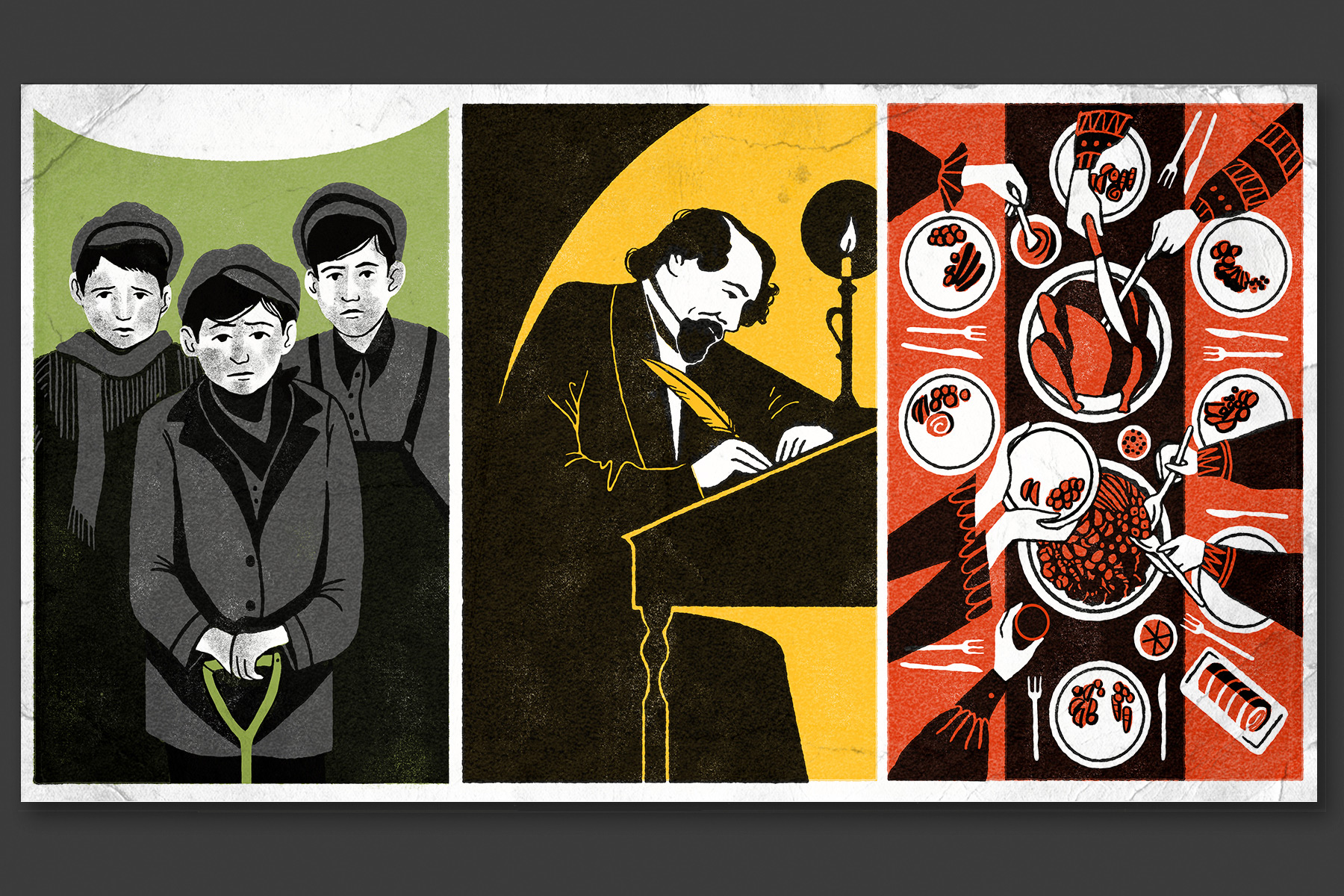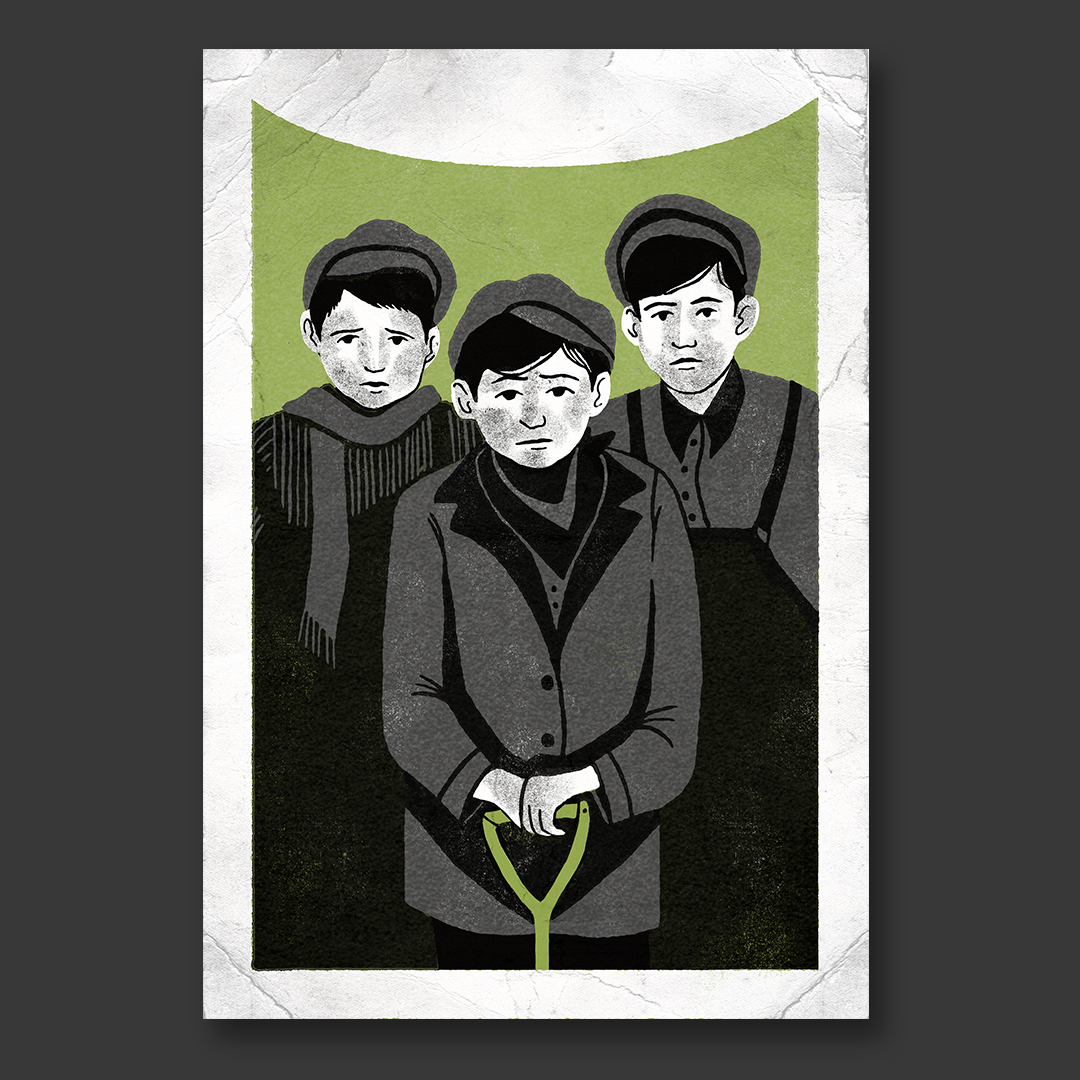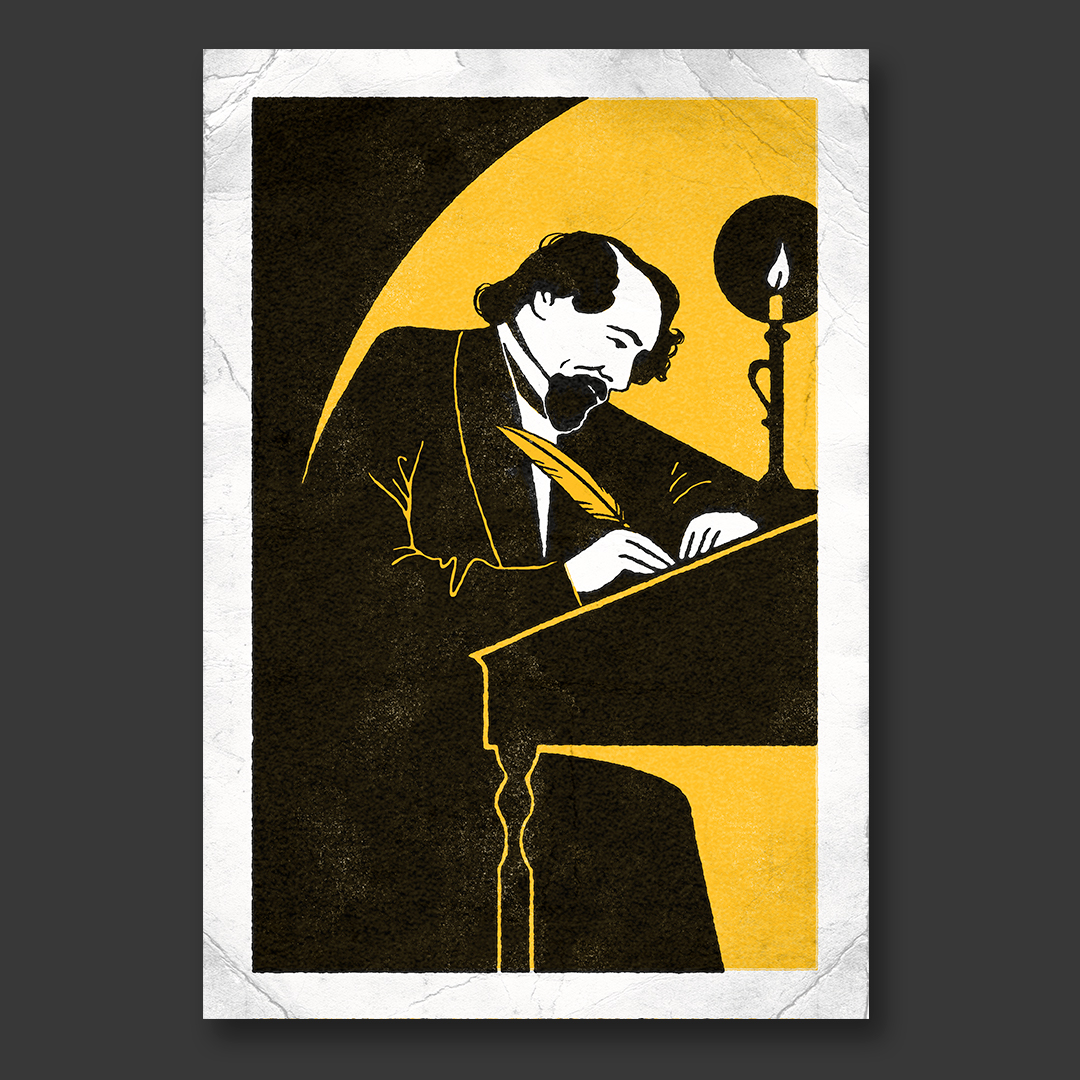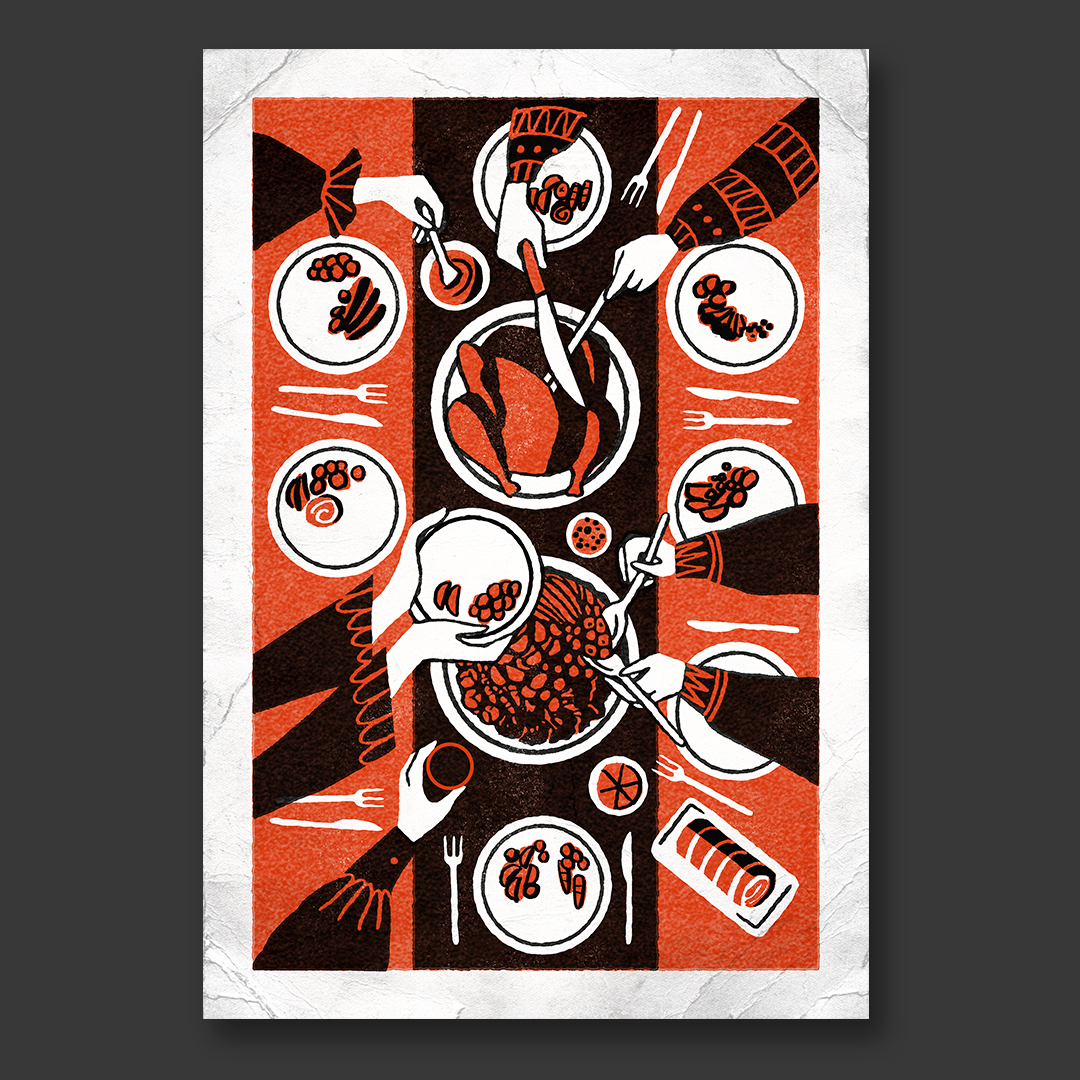
- Home |
- Search Results |
- The real story behind Charles’ Dickens A Christmas Carol
Nothing quite says ‘Christmas’ like Dickens’ mean old miser who hates everything associated with the cursed day. The story of Ebenezer Scrooge and his ghostly visitations is as synonymous with the season as turkey, Santa and raisin-addled puddings. And with most editions just under 100 pages, it is the perfect book to curl up with alongside a glass of mulled wine.
Like the Bible, Charles Dickens’ A Christmas Carol never been out of print, and from The Muppets to Robbie Williams (check out the cover of The Christmas Present), this festive tale of greed, inequality and the values that make a life worth living has been reinvented countless times since it was first published in 1843.
But what is less well-known is the story of what drove Dickens to write his best-known tale in the first place, one which, in a year when discussions about childhood hunger and the value of Christmas beyond material goods have been pressing, couldn’t be more timely.
First, some scene-setting. The 1840s were dubbed “the Hungry Forties”, thanks to a brutal combination of a trade slump, leading to economic depression and mass unemployment, and repeated harvest failures leading to inflated bread prices. For the working classes and the poor, especially, times were extremely tough. The country was also undergoing mass industrialisation, with families flocking to overcrowded cities and the demand for work being such that even children were sent out to seek employment.
'Dickens was wading through debt and trying to support his father. He needed to write a hit – fast.'
Against this, Dickens was nearing his thirties on a tidal wave of success. The serialisation of stories such as Oliver Twist, Nicholas Nickleby, The Old Curiosity Shop and Barnaby Rudge had made him something of a darling of Victorian London, enjoyed even by the young Queen. But by the early 1840s, the relationship with his publishers had soured and the increasingly politicised Dickens found himself dispirited by the Tories return to power. By 1843, Dickens was also in dire need of cash: The Life and Adventures of Martin Chuzzlewit, his latest serialised novel, was selling so poorly that his publishers were threatening to decrease his salary. Throw in a fifth child on the way, and the fact Dickens was wading through debt while trying to support his father meant he needed to write a hit – fast.
That might have been motivation enough for Dickens to churn out a novella in six weeks, but there were larger issues at play. The author had been investing more of his time in social causes: in 1842 he went on a tour of America which furthered the criticism of slavery that he had previously expressed in The Pickwick Papers. He wrote anti-Tory satires and associated with doctors and philosophers who campaigned for social change in an increasingly divided Britain.
There was one document, though, that really galvanised Dickens: in early 1843, parliament was presented with a report on the extent of child labour in the country. It detailed unimaginable horrors: interviews with seven-year-olds who had spent half their lives in mines, smoking eight-year-olds who had been working so long their own fathers didn’t know when they started. Anecdotal evidence that “young boys are taken down as soon as they can stand on their legs”.

Several authors were incensed to write in reaction to this, among them Elizabeth Gaskell, Benjamin Disraeli and Elizabeth Barrett Browning. But few had the same lived experience as Dickens, who had worked in a shoe-blacking factory at the age of 12 after his father was sent to debtor’s prison.
Dickens fostered plans for a protest pamphlet called 'An Appeal to the People of England on behalf of the Poor Man’s Child'. But he soon realised that a pamphlet wouldn’t be enough to deliver “a sledgehammer blow” of awareness about the plight of poor children. Dickens, instead, was determined to write something with “twenty thousand times the force” of a pamphlet issued to government.
A visit to a “ragged school” also played its part. Dickens was no stranger to these institutions, which provided free education to poor and destitute children – they’d directly inspired Fagin’s Den in Oliver Twist – and a visit in 1843 further convinced him that poverty, ignorance, redemption and kindness should be central to A Christmas Carol. In 1846, Dickens wrote a letter to newspaper, The Daily News, which detailed his experience. He describes “two or three miserable rooms, upstairs in a miserable house” in which “a crowd of boys, varying from mere infants to young men, sellers of fruit, herbs, lucifer-matches, flints, sleepers under the dry arches of bridges, young thieves and beggars – with nothing natural to youth about them” – a sight, he goes on to write, that “haunted” him.
'With these two oft-forgotten characters, Dickens’ message was that to neglect poor children was to rob them of their future.'
One of the key – and most politicised – scenes in A Christmas Carol, often left out of modern adaptations, is when Scrooge meets, beneath the robe of the Ghost of Christmas Present, "two children; wretched, abject, frightful, hideous, miserable... a boy and a girl.
"'Spirit, are they yours?' Scrooge could say no more. 'They are Man's,' said the Spirit, looking down upon them. '...This boy is Ignorance. This girl is Want. Beware them both, and all of their degree.'"
With these two oft-forgotten characters, Dickens’ message was that to neglect poor children was to rob them of their future. Without learning, shelter, food and healthcare, vulnerable children would grow up quickly, and potentially into criminals – if they were to make adulthood at all.
It would take a trip to Manchester, in October, for his ambition to ossify into A Christmas Carol. Dickens travelled north to give a speech on the importance of education across the social spectrum, visiting his sister, Fanny, who lived in the city. His nephew Henry was disabled, and seeing the family made Dickens aware of the challenges that could be put on a family; the inspiration for Tiny Tim was sparked.

Dickens turned in 30,000 words in six weeks, conjuring the narrative while taking 15 to 20-mile walks around London during the depths of night in the autumn of 1843. Still, his publishers, unconvinced by the lacklustre sales of Chuzzlewit, refused to cough up for the book, leading Dickens to pay for the printing himself. He didn’t make things easier for anybody by rejecting no fewer than two rounds of endpapers – first a drab olive set, then a jauntier yellow set, which clashed with the title page. The finished book was quite the luxury item: bound in red cloth, pages edged with gilt, it finally completed production two days before publication day on 19 December. Priced at the modern equivalent of £25, it nevertheless captured the hearts of the increasingly Christmas-hungry Victorian middle-class, who snapped up all 6,000 copies by Christmas Eve.
It’s difficult to imagine such scenes without typically Dickensian flourishes of Christmas Trees, elaborately wrapped gifts and perhaps a light sprinkling of snow. But the UK was, by contrast, in its infancy of festive frivolity. A Christmas Carol was released in the same year that the Christmas card was invented; the concept of the holiday was about as novel than as 'Black Friday' is in the UK today – and people were giddy about it. Dickens himself threw a festive shindig that year on Boxing Day, in which the author performed magic tricks including turning "ladies' handkerchiefs into candies" and transforming "a box of bran into a guinea pig." Within a year, A Christmas Carol had been reprinted 11 times – two of which before 1843 was out.
The book also cheered the critics, who celebrated “its gentle spirit of humanity” and Dickens’ ability “to make the reader laugh and cry, to open his hands, and open his heart to charity even toward the uncharitable”. That other arch social commentator, William Makepeace Thackeray, was a fan, describing it as “a personal kindness”. A couple of critics, however, were swift to point out the irony of a book about championing the needs of the poor being inaccessible to them, given the opulence of its printing.

Perhaps ironically, all of this good cheer didn’t entirely satisfy Dickens’ financial needs. While he was hankering for n £1,000 pay-day (the equivalent of £100,000), he ended up with nearer £230 after the first edition; a year on, and profits earned him £744.
Like most authors, even today, he ended up making more from speaking gigs than book sales – albeit not untill the 1850s, whereupon he proceeded to read a shorter version of the story at events no fewer than 127 times, for the next 20 years – right up until he died in 1870.
By then, A Christmas Carol was firmly in the public imagination. For the little it filled Dickens’ pockets, it helped to form our concept of Christmas: one of charity, of reconciliation, of sharing generosity and good will over a table laden with glistening food. Before A Christmas Carol, Victorians didn’t wish one another a “Merry Christmas”, or call those who didn’t “Scrooge”. The book’s legacy is well-worn, but its origins give A Christmas Carol a pertinent credence and message: looking after the most vulnerable in society is the greatest gift of all.
Images: Diana Dagadita / Ephemre for Penguin